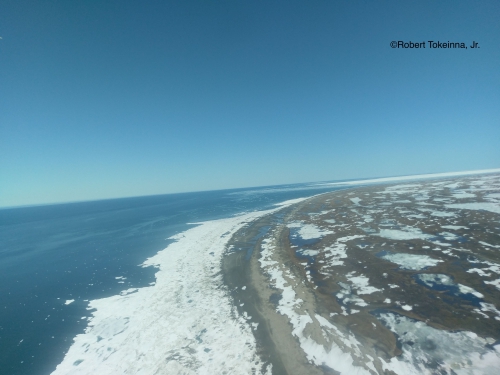Assessment of Current Ice Conditions Relevant to Distribution and Access of Walrus
SIWO 2017 SEASON ALMOST OVER - There is very little ice left in the Bering Strait region, so this may be our last report of the spring.
Near St. Lawrence Island
Sea ice remains shorefast along the northeast coast of St. Lawrence Island up to 2 nautical miles from the coast. Close pack ice extends an additional 1 to 3 nautical miles from the shorefast ice with very open pack ice along the eastern coast of St. Lawrence Island as ice has been dragged by winds and ocean currents. Shorefast ice remains within Nayvaghpak (Niyokpok) Lagoon.
Nome
Norton sound is nearly sea ice free as a result of warmer waters from the Bering Sea moving into the region. There is currently no sea ice near Nome, with very open pack ice 30 nautical miles to the west and 50 nautical miles to the east.
Wales to Shishmaref
Shorefast ice continues to show rapid deterioration lately with new leads developing. Much of the shorefast ice that has broken off has drifted to the northeast and has begun to melt in warmer waters. The remaining shorefast ice is generally 1-2 nautical miles from shore near Shishmaref while shorefast ice is no longer present near Wales. Close pack ice is 15 to 22 NM from shore near Shishmaref while close pack ice extends only 8 to 12 NM near Wales.
Little Diomede
Little Diomede Island is now sea ice free on all sides.
Forecast Discussion
Ice Forecast
Near the Wales to Shishmaref coast, pieces of ice are expected to continue to break off the very close ice pack while concentration along the ice edge continues to gradually diminish. The shorefast ice near Shishmaref will likely remain in place through the next week but there is a small chance the ice could break away from the coast sooner. The pack ice in this region will continue to break up and melt, but some open water will remain west of Wales. The offshore waters of the Bering Strait region will likely remain ice free for the season. For St. Lawrence Island, the sea ice on the northeast side of the island will continue to melt as waters warm and it spreads apart with local wind and ocean currents. The very open pack ice that has been dragged along the east side of the island will continue to melt at a quicker pace than the close pack ice on the northeast side of the Island. Near Nome, the waters are now ice free in a radius of at least 25 nautical miles. Waters in Norton Sound will likely be ice free by the middle of next week and remain ice free through the remainder of the season.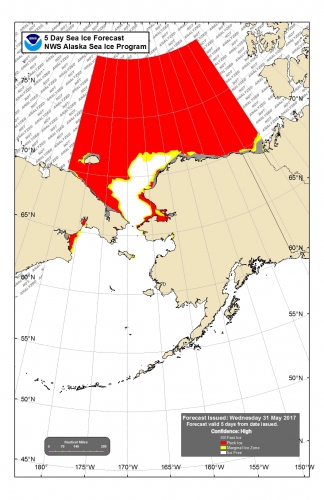
Wind Synopsis
East winds will be 5 to 10 kt (10 to 15 mph) sustained on St. Lawrence Island and will increase on Friday and Saturday from the northeast 15 to 20 kts (20 to 25 mph), while areas along the Chukchi Sea coast will remain north to northeast 5 to 10 kt (10 to 15 mph) over the weekend. Winds will shift to east on Sunday 10 to 15 kt (15 to 20 mph) over St Lawrence Island while areas north of the Bering Strait will remain at 5 to 10 kt (10 to 15 mph) through Tuesday before becoming northeast on Wednesday. By Friday, June 9th both areas will see northeast winds 10 to 15 kt (15 to 20 mph) along St Lawrence Island and north of the Bering Strait.
Temperature Trend
Low temperatures will initially start in the upper 20s to mid 30s with a gradual warming trend to mid to upper 30s by Sunday, then gradually dropping back to lower to mid 30s by Tuesday, June 6th and remaining through Friday, June 9th. High temperatures will initially start in the lower 40s on Friday with a warming trend on Sunday with mid 40s on St Lawrence Island to near 50 north of the Bering Strait coast. Then high temperatures will drop back down to lower to mid 40s on St Lawrence Island with mid to upper 40s north of Bering Strait coast through Friday, June 9th.
Daily Weather, Wind, and Temperature Updates
The National Weather Service provides twice-daily, text only updates on the weather, wind, and temperature conditions in specific geographical zones. An interactive weather map for access to other Alaskan zones can be found here: http://weather.gov/anchorage/ice
Wind maps are updated daily and can be viewed here: http://www.weather.gov/afg/SIWO_overview
Marine forecast for the West Coast and Arctic Coast

Remote Sensing Images
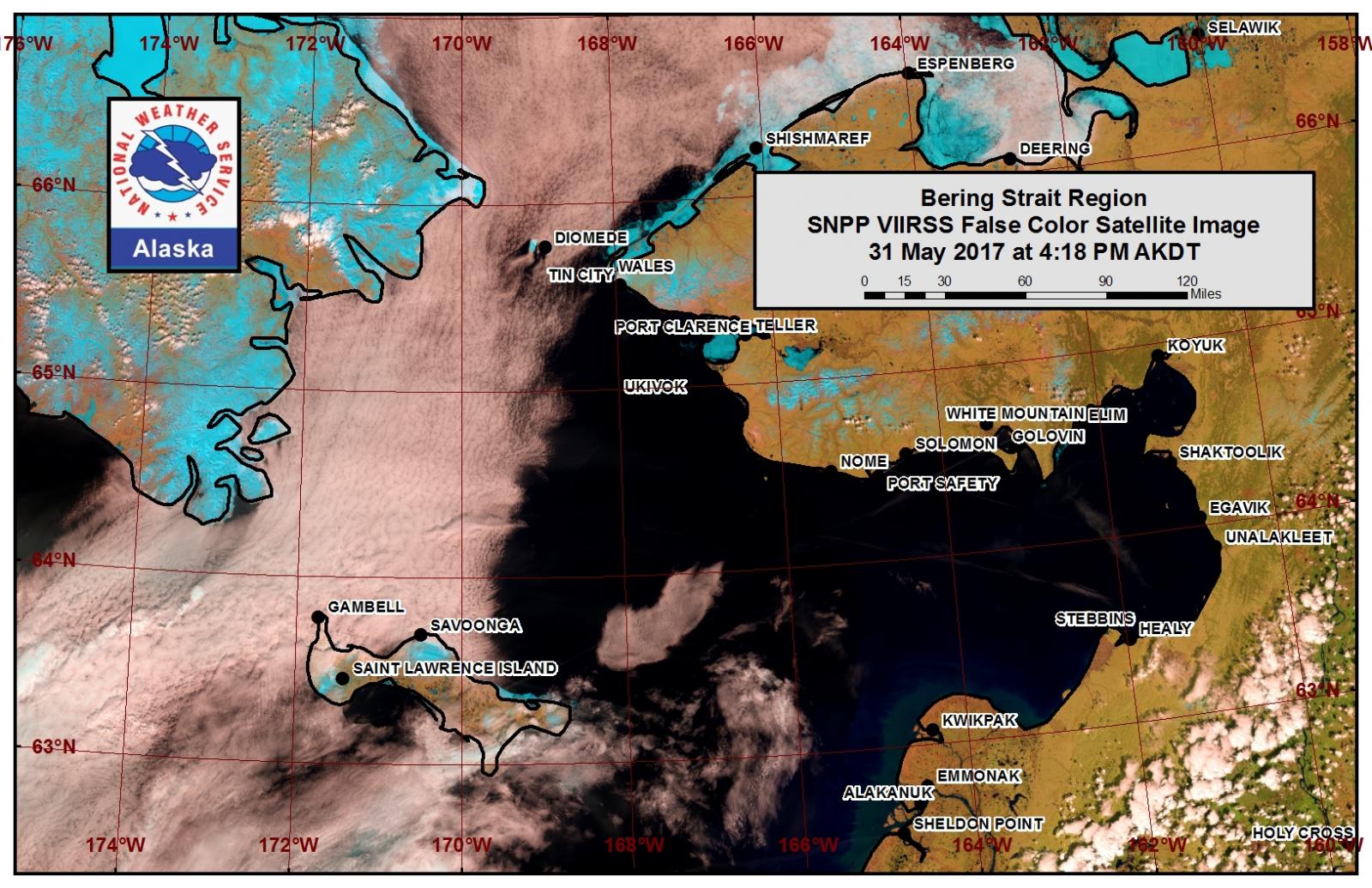
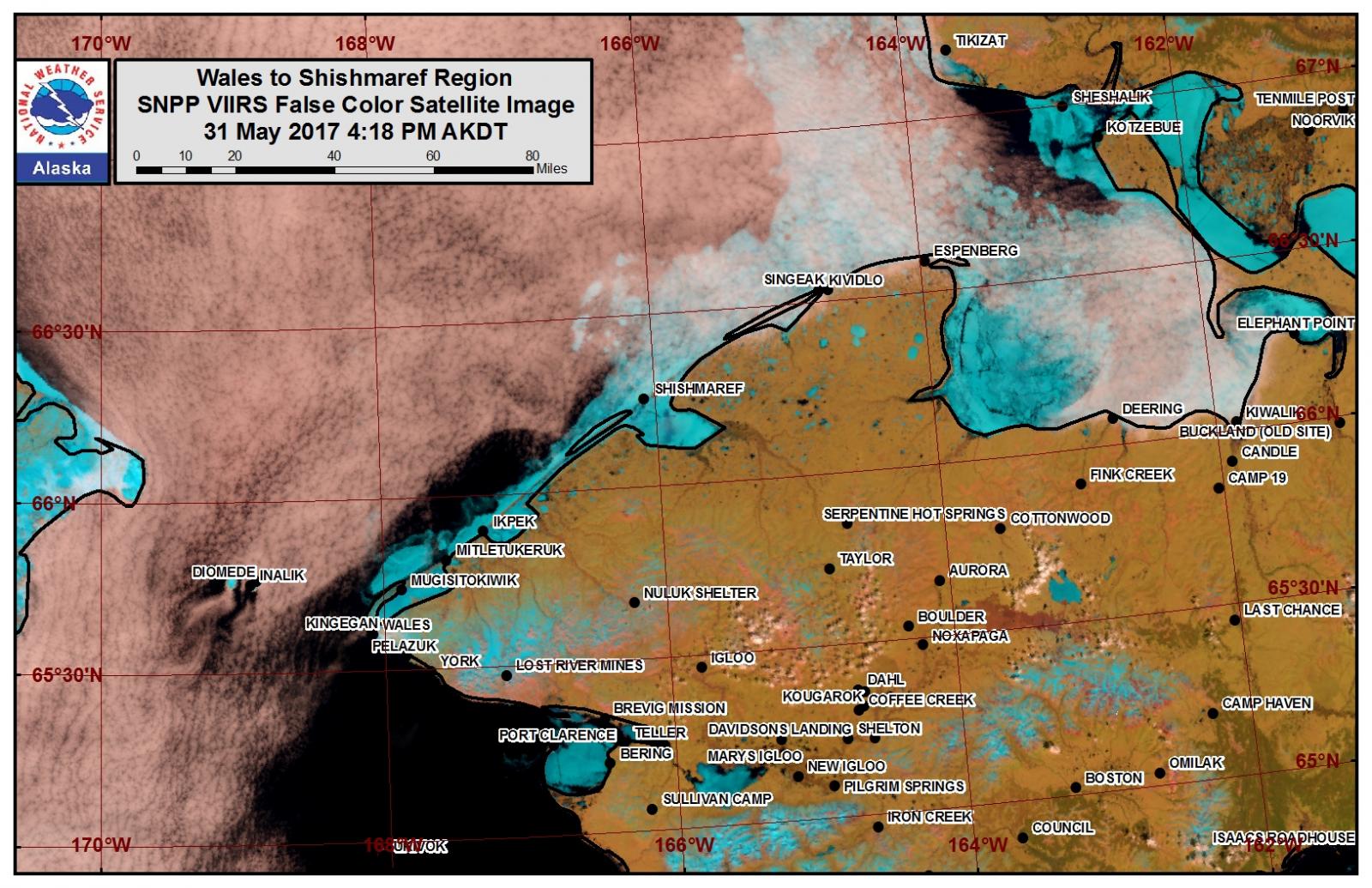
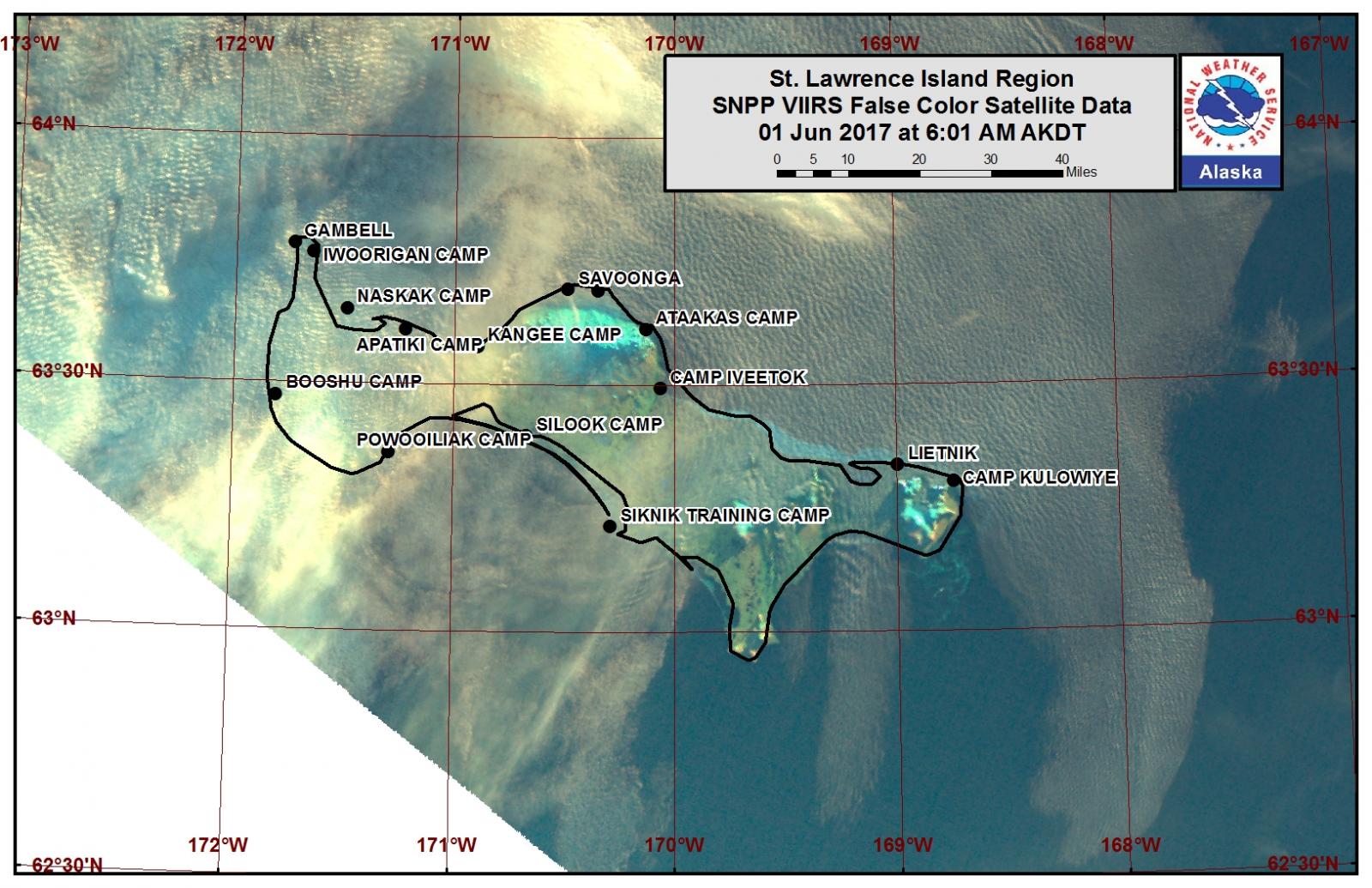
Observations and Comments
Observations of Sea Ice Development
Observations from Nome
2 June 2017 – Boogles Johnson
Boogles is out of town this week, but reports that the Nome area is practically sea ice free.
Observations from Shishmaref
2 June 2017 – Curtis Nayokpuk
Hunters limited to small open leads for Bearded Seals. Tide moves ice in and closes leads and hunters have to search for seals laying on top the ice if safe enough to walk on. No one has hunted for Walrus with the rotting ice edge to launch boats to open sea. Still flocks of ducks, Snow Geese, cranes flying over the village the past few weeks. 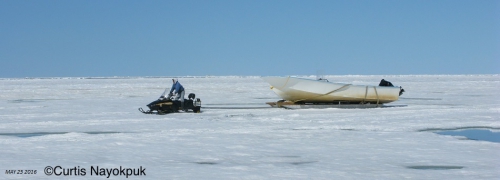


Kotzebue, Kivalina and Pt. Hope will be hunting remaining ice. Shishmaref hunters may scale back trips due to rotting ice. One hunter sunk his snow machine last night but recovered it with help. If ice becomes too rotten we will be land locked till the sea ice breaks up.
Observations from Wales
2 June 2017 – Robert Tokeinna, Jr.
In the photo, you can see there is less shore ice and more flow ice further north of Wales. I flew from Nome to Wales on a commercial flight and there is some ice in the Brevig/Teller area with mostly open water in the ocean. If there were to be ice, it would be drifting in open water. Near the 3rd inlet of the Loop Lagoon, you can notice an exceptional size lead which created a flow ice sheet in size of more than a couple miles. This photo was taken approximately 1 mile from the community and at an elevation of about 450 feet in the air. Notice the openings of ponds and lakes nearby. A lot of melting and near loss of our shorefast ice is starting to become flow ice. I saw on social media that local hunters were successful on getting meat for their respective homes. As far north of near the 3rd Inlet, the ice will be lost but most of the time it hangs out til the next blow of south winds. Please note I have been out of town the whole week, but have notice big change in ice since May 24, 2017 as noted above.